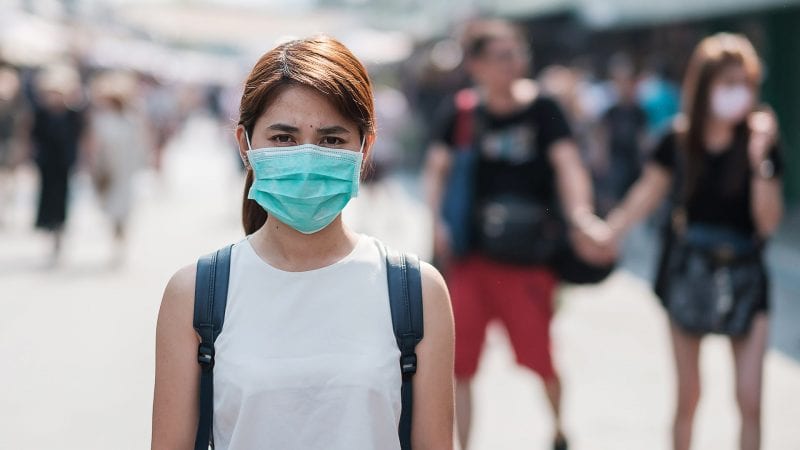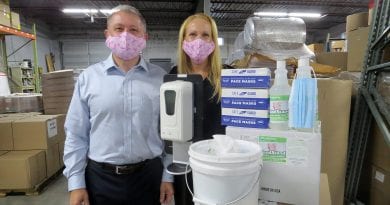Childcare Centers, Camps to Reopen Under Strict Guidelines
Keeping the Kids Safe
Reopening an early-education center in the COVID-19 era isn’t easy, Kristine Allard says. In fact, it’s a delicate balance.
“We have strongly advocated for the safety and well-being of all of our children and balanced that with our need to maintain a high-quality early-learning environment, understanding that parents need to return to work and need to feel confident that their children are safe and healthy,” noted Allard, vice president of Development & Communication at Square One, which will open its centers to children on June 29.
That’s a lot of colliding interests, but they didn’t arise suddenly, she said, noting that the organization has been working closely with the Department of Early Education & Care since before the governor gave the stay-at-home order back in March.
“Our classrooms and curriculums are being reconfigured,” she noted. “We have purchased the necessary personal protective equipment and related supplies. And our staff is being trained on responding to the social and emotional needs that we expect will arise when our children return to us.”
Centers across Massachusetts have been preparing in much the same way, now that the state has released health and safety requirements that apply to the reopening of all childcare programs and recreational camps.

The Department of Early Education and Care (EEC) assembled a Health and Safety Working Group and solicited input from thousands of childcare providers from across the Commonwealth, as well as consulting with medical experts at Boston Children’s Hospital, to develop the “Massachusetts Child and Youth Serving Programs Reopen Approach: Minimum Requirements for Health and Safety.” These requirements must be implemented to protect the health and safety of all children, families, and staff and minimize the spread of COVID-19.
Prior to reopening, all programs must develop plans for daily health screenings and ways to identify children and staff who are sick, symptomatic, or who become exposed to coronavirus. Programs must also have a plan in place to handle possible closings, staff absences, and gaps in child attendance, as well as determine how to communicate with staff, parents, local boards of health, and others.
Programs must screen all staff and children with a temperature check before they are permitted to enter the childcare space, and they must establish one entry point to ensure no one is allowed in the building until they pass a health screening.
Masks and More
Meanwhile, parents must wear masks or face coverings when picking up and dropping off. Children over age 2 should be encouraged to wear a face covering, at the discretion of parents or guardians, if they can safely wear, remove, and handle the mask, with certain exceptions. Masks do not need to be worn while playing outdoors if children are able to keep six feet apart. Children should also not wear masks while eating, drinking, sleeping, or napping.
Staff members are encouraged to wear masks or cloth face coverings at all times when caring for children and interacting with parents and families. If possible, the department recommends staff wear transparent masks to enable children to see facial expressions, which is important for child development.
Programs are asked to make additional changes to their operations, including canceling field trips and not holding activities involving attendance of multiple groups. Non-essential visitors, including parents and volunteers, will be restricted from entering the premises of childcare programs.
“We have strongly advocated for the safety and well-being of all of our children and balanced that with our need to maintain a high-quality early-learning environment, understanding that parents need to return to work and need to feel confident that their children are safe and healthy.”
Group sizes must be restricted to a maximum of 10 children, with a total of 12 individuals including children and staff in each room. Consistent with pre-pandemic operations, the infant-to-staff ratio is smaller, with seven infants to two staff members and a maximum of group size of nine.
Children must remain with the same group each day and at all times while in care. Siblings should be kept in the same group, when suitable. Groups must not be combined at any time. The same staff must remain with the same group of children each day. Staff should not float between groups either during the day or from day to day, with some limited exceptions.
Group transportation should be provided only during the phased reopening when there is no other option to transport children to and from the program. Programs intending to provide transportation services should follow detailed guidance.
“The road ahead of us is a very long one, and we know there will be bumps along the way,” Allard told HCN. “We are doing everything we can to be ready to meet the challenges that will come our way. We are looking forward to filling our centers with the smiles and laughter that we have desperately missed these last few months.”
Summer Camps
Recreational camps and municipal or recreational youth programs not traditionally licensed as camps may open during phase 3 of the state’s four-phase strategy, with dates to be announced.
For summer day camps, campers and counselors will need daily health screenings, including temperature and other checks for signs and symptoms of illness. Camps will need plans in place for when a staff member or child becomes sick. Camp spaces will need to be prepared to ensure physical distancing, and camps will need to have at least two health-services staff on site at all times.
Other protocols require campers and counselors to stay together in their groups, and staff will not be able to move between groups either during the day or from day to day, unless needed to provide supervision of specialized activities such as swimming.
Snacks and meals should be brought from home, pre-packaged, or ready to serve in individual portions to minimize handling and preparation. When this is not feasible, staff must prepare and serve meals. No family-style food service is allowed.
Parents must wear face coverings, and camps must develop safe pickup and drop-off procedures to maintain social distancing. Camps may not take campers on field trips or for other off-site travel.
—Joseph Bednar



